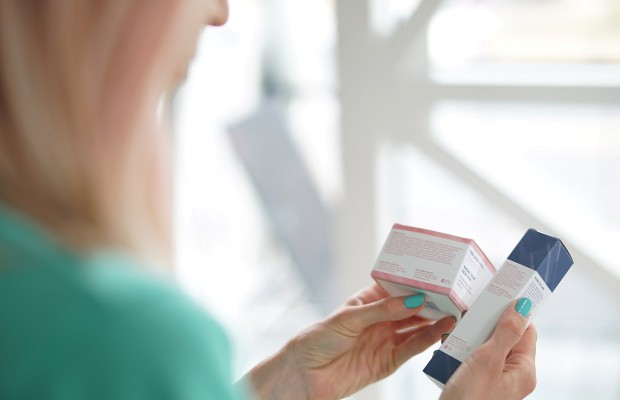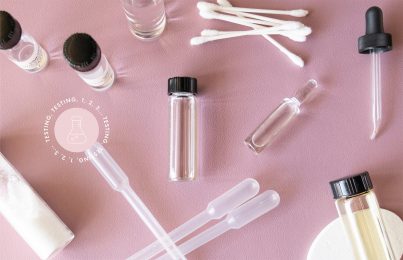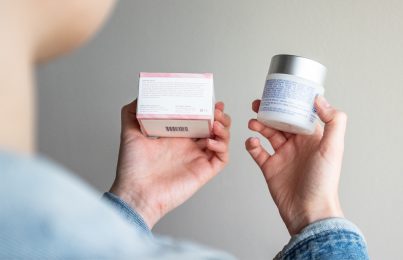Updated 10/05/21. With information about skincare ingredients being so accessible these days, it’s a much bigger topic than it’s ever been before. Consumers are more and more likely to research product formulas in order to make the best choices for their skin. This is a good thing. After all, as I always say, the more informed you are as a consumer, the better.
With that being said, it’s difficult to determine whether a product will deliver the best results for your skin just by looking at the ingredient label. In this post, I’ll explain why that is. Keep scrolling to learn more about ingredient labels and how to read them.
Why You Shouldn’t Make Assumptions About a Product Based on Its Ingredient Label
Let’s say you’re prone to breakouts. You might assume that products that contain shea butter and sunflower oil won’t work for you. You might think they’ll be too greasy or pore-clogging for your skin type. The truth is that these assumptions aren’t always accurate, because it all comes down to the percentages that are used in the formula. That’s something you can’t necessarily get from just looking at an ingredient label on the back of a bottle or jar. (Learn more about ingredient percentages.)
Here’s an example of a time in which inaccurate assumptions were made about one of my products. A few years ago, a well-known expert reviewed Daily Protection SPF 30. They requested information about the product, including the ingredient list, to learn more. However, they didn’t request the actual product. When the review came out, it was positive. However, they said that based on the formula’s moisturizing ingredients, it was best suited for dry and very dry skin types. In reality, this product is suited for oily, breakout-prone skin types since it’s so lightweight and dries to a matte finish. The point of the story is that even an expert couldn’t tell this from looking at the ingredient label alone.
3 Things to Know Before Reading an Ingredient Label
1. Every Ingredient Serves a Specific Purpose
Every ingredient has its purpose. It could be a humectant, meaning it’s included in a formula to draw water from the air and from the deeper layers of the skin in order to hydrate the skin. Or, it could be a solvent, meaning it dissolves a substance to make a solution. Every ingredient has a purpose, and the best product for your skin could very well be the one that may not look like it based on the ingredient label alone.
To increase the chances of a product being compatible with your skin, choose those that are formulated exclusively for your skin type. If you don’t know your skin type, take the skin type quiz. At the end of it, you’ll receive personalized product recommendations. If you need additional assistance, you can schedule a virtual consultation with a Renée Rouleau esthetician.
2. Not Every Ingredient Is What It Seems
If you’re reading an ingredient label, and you see alcohol listed, you might assume that the product will be drying. This isn’t always the case.
For example, did you know that a common form of vitamin E, which is called tocopherol, is actually an alcohol, yet it offers moisturizing benefits? Alcohol ingredients can act as humectants, solvents, emulsifiers, surfactants, and even antioxidants! The point is that not all alcohols are the same.
The only time I recommend avoiding alcohol across the board is when it comes to toner. Many toners that contain alcohol contain drying forms of it, such as SD Alcohol 40, denatured alcohol, and isopropyl alcohol. These can, in fact, dry out the skin.
3. The Percentage of an Ingredient Matters
Did you know that the very same ingredient can perform differently depending on the percentage that’s used? Take niacinamide for example. At 0.5%, this ingredient gives the skin a boost of energy. At 2%, this ingredient can help improve the function of the skin barrier. A study by the Department of Dermatology at Wake Forest University showed that, at 2%, it can even help control oil production. At 4-5%, it has been shown to offer significant brightening effects on par with a skin bleach called hydroquinone.
The point is that you can’t tell the exact percentage of an ingredient just by looking at the label unless the brand has provided that information. The percentage is an important piece of the puzzle, because, as demonstrated by niacinamide, an ingredient can provide different actions at different percentages. (Learn more about ingredient percentages and how they affect the performance of skincare products).
Can an Ingredient Label Tell You Anything About a Product’s Safety?
There’s a lot of talk about “clean beauty.” There’s also no shortage of people who discuss specific skincare ingredients in both a positive and negative light. The truth is, though, it’s very challenging to glean anything about product safety just from looking at an ingredient label, which is why I suggest turning to a source you trust. As an esthetician with over 30 years of experience, as well as a product formulator, it’s my duty to sort through all of this information. It’s also my duty to review scientific studies to determine what information is valid. Not only do I study skincare ingredients closely, but I have taken cosmetic chemistry courses at UCLA to continue my learning.
I also work closely with cosmetic chemists. These trusted experts study skincare ingredients and related studies thoroughly and consistently. If new studies become available on the safety or performance of ingredients that we’re considering using and/or currently use, they promptly inform us.
Please know that we don’t cut corners or use poor-quality ingredients. Furthermore, we would never sell anything that we wouldn’t use on ourselves. Ultimately, it’s up to you to decide what’s best, but I hope this helps you make an informed decision. Our customers’ safety is of the utmost importance to us!
Next, see what experts want you to know about the safety of sunscreen.
Celebrity Esthetician & Skincare Expert
As an esthetician trained in cosmetic chemistry, Renée Rouleau has spent 30 years researching skin, educating her audience, and building an award-winning line of products. Her hands-on experience as an esthetician and trusted skin care expert has created a real-world solution — products that are formulated for nine different types of skin so your face will get exactly what it needs to look and feel its best. Trusted by celebrities, editors, bloggers, and skincare obsessives around the globe, her vast real-world knowledge and constant research are why Marie Claire calls her “the most passionate skin practitioner we know.”




Comments:
Hello,
Eanted to know how do you feel about the ingredients Methylparaben ?
Thanks!
Posted By: Veronica Rodriguez |
Hi Veronica. I wrote about parabens and my opinion on them in this post: https://blog.reneerouleau.com/the-future-of-skin-care-by-skin-expert-renee-rouleau/. It’s an older post, but my opinions haven’t changed. Hope this helps!
Posted By: Renée Rouleau |
The skin care expert you are talking about is one I have trusted implicitly for years. I never even considered that she may even be trying these products out herself. Thanks for the input.
Posted By: PinkyPriss |